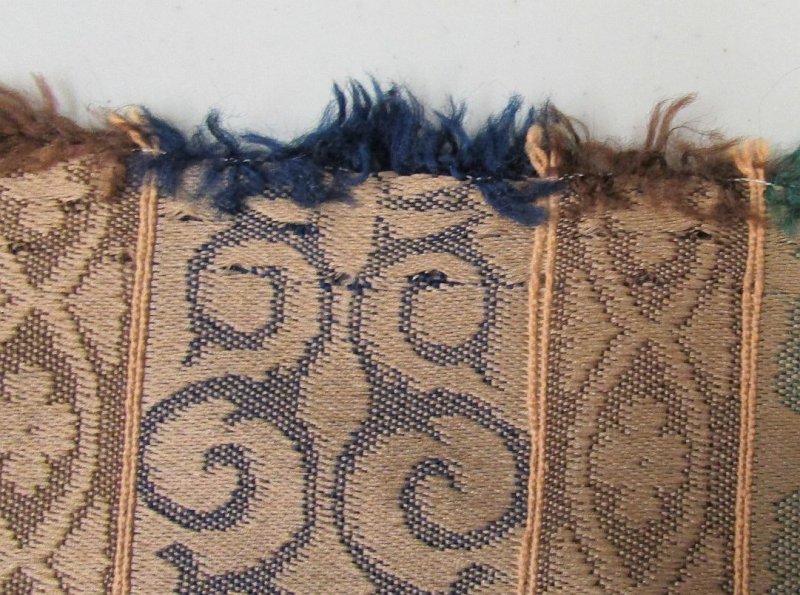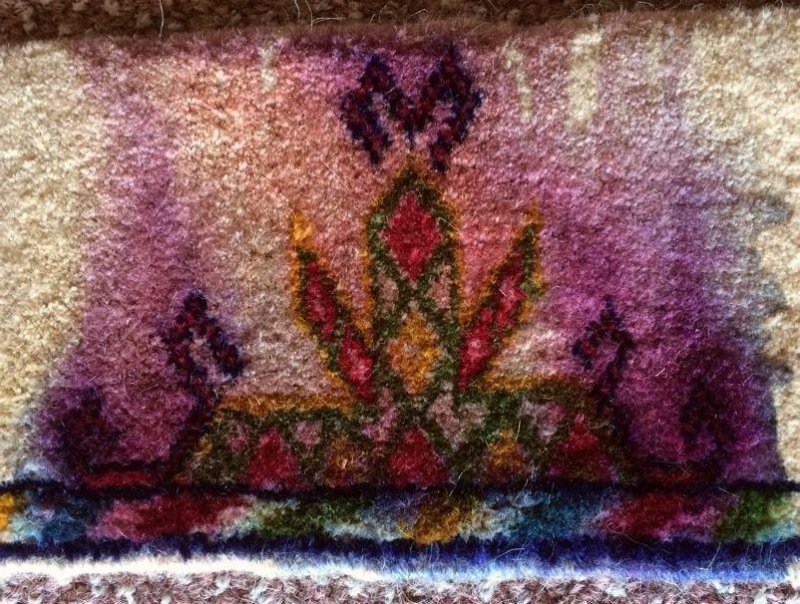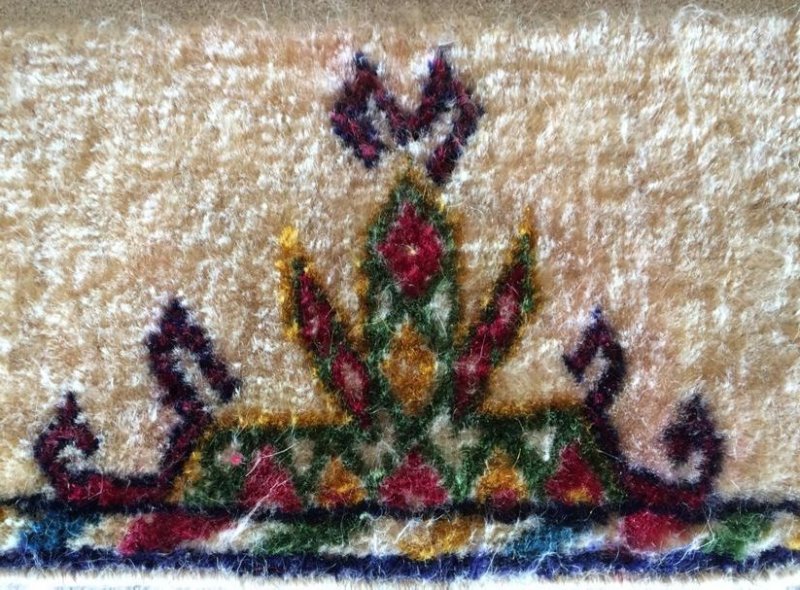Jim Pemberton
MB Exclusive.
- Joined
- Oct 7, 2006
- Messages
- 12,769
- Name
- Jim Pemberton
Three Risks You Must Avoid When Cleaning Jacquard Fabrics!
by Jim Pemberton - Fabric Pro Specialist
Important Reminders For Cleaning Professionals!
Jacquard weaves are among the most difficult and risky fabrics to clean. You might recognize jacquards by other names, such as brocade, brocatelle, damask, matelasse, and tapestry. Regardless of the specific style, all jacquard weaves have a similar basic design.
To create a jacquard weave, warp yarns are raised to create a pattern, which is often floral. In the areas where a "plain" background is desired, the warp yarns run underneath of the fabric. If you can turn over an arm cover or skirt, or if you can unzip a cushion, you'll see the reverse of the face pattern. In some cases, the pattern on the back of the will have the appearance of wide strips of color.
This Weave Can Create Three Potential Problems For Upholstery Cleaners:
#1. Fabric Distortion:
If aggressive brushing or extremely high vacuum is used during cleaning, the yarns used in this fragile weave may be damaged.
#2. Shrinkage:
If the fabric is over wet during cleaning, shrinkage may occur.
#3. Color Bleeding:
Color Bleeding: Jacquard weaves often have brightly colored yarns running under the fabric which makes the tendency to bleed much more common in this fabric. Over wetting and/or the use of aggressive cleaning agents are the two most common causes of bleeding with jacquard fabrics.
Don't Let This Happen To You!

INSPECTION, TESTING AND PROPER PRODUCT USE WOULD PREVENT THIS DAMAGE!
How To Prevent Problems When Cleaning Jacquard Weave Fabrics
Testing is Critical!
Use a simple burn test to determine is the fabric is natural, synthetic, or a blend of both natural and synthetic fibers Natural fiber jacquards and blends are more susceptible to damage than synthetic fiber fabrics are. Test all jacquard weaves, regardless of fiber content, for color bleeding as well.
Follow These Steps Every Time You Clean A Jacquard To Prevent Costly Claims:
#1. Prevent fabric distortion:
a - After applying preconditioner, gently agitate natural fiber jacquard fabrics with a soft horsehair brush or a natural sponge.
b - If you use a truck mount or high vacuum portable, open the vacuum relief valve on your upholstery tool to prevent damage from excessive vacuum suction.
c - Use a plastic screening when you clean areas where the fabric may have been weakened, such as cushions and arms.
#2. Avoid shrinkage: {Shrinkage is a rare problem when upholstery is cleaned properly.}
a - Apply preconditioning agents lightly! Use dry foam, or a light mist when you apply upholstery preconditioner.
b - Do not over wet when rinsing! Extraction should be accomplished with a "dry tool"; my favorite is the Sapphire Scientific Upholstery Pro.
#3. Eliminate color bleeding:
a - Use safe formulations! Natural fiber jacquard weaves should be preconditioned with neutral detergents & rinsed with mildly acidic fabric rinsing agents.
b - Speed dry every step of the way! Use drying fans on each cushion as you proceed, and the body of the furniture as you finish. The fabric should be dry before you leave to assure color stability.
If you follow the recommendations outlined above, you will have little or no problems when you clean jacquard weaves. You run your greatest risks when you attempt to clean old, heavily stained fabrics.
Fabrics that have been abused in this manner will not always respond the special care techniques recommended in this article. Do not attempt "heroics" by using aggressive agitation or harsh chemicals in an effort to please your customer; it isn't worth the risks.
When you are in your customer's home cleaning carpet, recommend that the furniture be cleaned before heavy soiling occurs. If you and your customer work together to maintain their valued furnishings, you will be able to clean the fabric to your customer's satisfaction, and minimize any risks of damage.
************************************
Find more useful product information at PEMBERTONS On-Line Store.
by Jim Pemberton - Fabric Pro Specialist
Important Reminders For Cleaning Professionals!
Jacquard weaves are among the most difficult and risky fabrics to clean. You might recognize jacquards by other names, such as brocade, brocatelle, damask, matelasse, and tapestry. Regardless of the specific style, all jacquard weaves have a similar basic design.
To create a jacquard weave, warp yarns are raised to create a pattern, which is often floral. In the areas where a "plain" background is desired, the warp yarns run underneath of the fabric. If you can turn over an arm cover or skirt, or if you can unzip a cushion, you'll see the reverse of the face pattern. In some cases, the pattern on the back of the will have the appearance of wide strips of color.
This Weave Can Create Three Potential Problems For Upholstery Cleaners:
#1. Fabric Distortion:
If aggressive brushing or extremely high vacuum is used during cleaning, the yarns used in this fragile weave may be damaged.
#2. Shrinkage:
If the fabric is over wet during cleaning, shrinkage may occur.
#3. Color Bleeding:
Color Bleeding: Jacquard weaves often have brightly colored yarns running under the fabric which makes the tendency to bleed much more common in this fabric. Over wetting and/or the use of aggressive cleaning agents are the two most common causes of bleeding with jacquard fabrics.
Don't Let This Happen To You!
INSPECTION, TESTING AND PROPER PRODUCT USE WOULD PREVENT THIS DAMAGE!
How To Prevent Problems When Cleaning Jacquard Weave Fabrics
Testing is Critical!
Use a simple burn test to determine is the fabric is natural, synthetic, or a blend of both natural and synthetic fibers Natural fiber jacquards and blends are more susceptible to damage than synthetic fiber fabrics are. Test all jacquard weaves, regardless of fiber content, for color bleeding as well.
Follow These Steps Every Time You Clean A Jacquard To Prevent Costly Claims:
#1. Prevent fabric distortion:
a - After applying preconditioner, gently agitate natural fiber jacquard fabrics with a soft horsehair brush or a natural sponge.
b - If you use a truck mount or high vacuum portable, open the vacuum relief valve on your upholstery tool to prevent damage from excessive vacuum suction.
c - Use a plastic screening when you clean areas where the fabric may have been weakened, such as cushions and arms.
#2. Avoid shrinkage: {Shrinkage is a rare problem when upholstery is cleaned properly.}
a - Apply preconditioning agents lightly! Use dry foam, or a light mist when you apply upholstery preconditioner.
b - Do not over wet when rinsing! Extraction should be accomplished with a "dry tool"; my favorite is the Sapphire Scientific Upholstery Pro.
#3. Eliminate color bleeding:
a - Use safe formulations! Natural fiber jacquard weaves should be preconditioned with neutral detergents & rinsed with mildly acidic fabric rinsing agents.
b - Speed dry every step of the way! Use drying fans on each cushion as you proceed, and the body of the furniture as you finish. The fabric should be dry before you leave to assure color stability.
If you follow the recommendations outlined above, you will have little or no problems when you clean jacquard weaves. You run your greatest risks when you attempt to clean old, heavily stained fabrics.
Fabrics that have been abused in this manner will not always respond the special care techniques recommended in this article. Do not attempt "heroics" by using aggressive agitation or harsh chemicals in an effort to please your customer; it isn't worth the risks.
When you are in your customer's home cleaning carpet, recommend that the furniture be cleaned before heavy soiling occurs. If you and your customer work together to maintain their valued furnishings, you will be able to clean the fabric to your customer's satisfaction, and minimize any risks of damage.
************************************
Find more useful product information at PEMBERTONS On-Line Store.
Last edited by a moderator:



![DyeRemoval[1].jpg DyeRemoval[1].jpg](https://mikeysboard.com/data/attachments/74/74965-9a354e700829764ab97b92fc2c20fae4.jpg)




